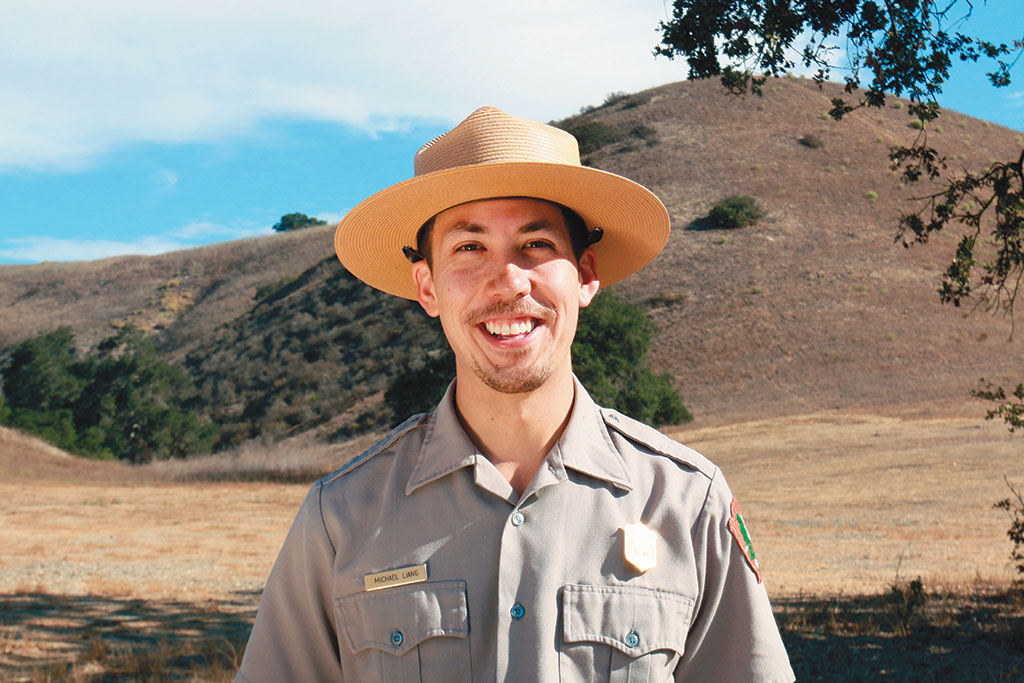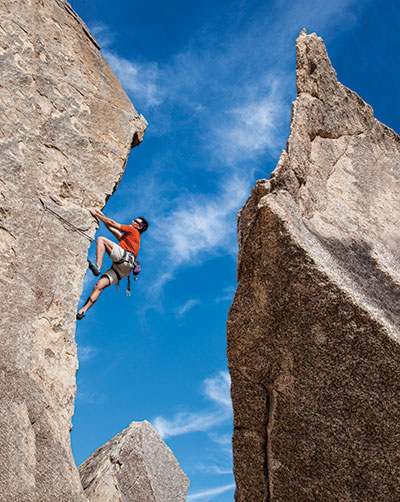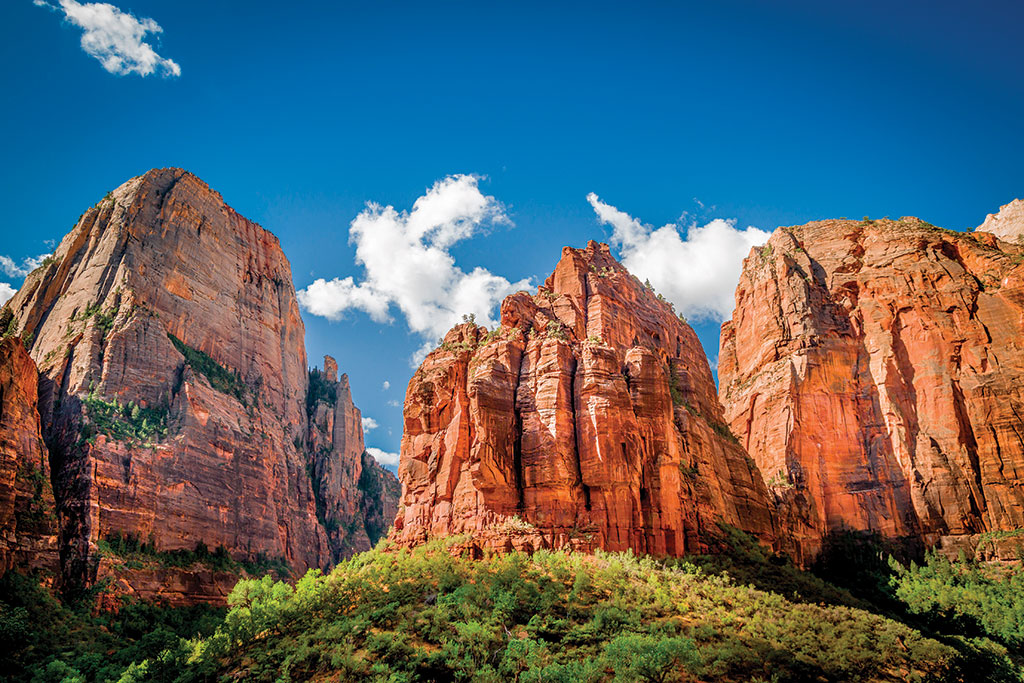“With that in mind, my favorite national parks are the ones that allow me to spend time with those I enjoy and care about. What is so amazing about the size and scope of our National Park System is that no matter where you are, there’s a park nearby to share with someone you love. One doesn’t need to live next to the Grand Canyon or Crater Lake for these places to provide a special experience. With each state and terri- tory having at least one, every person in the United States is close to experiencing a national park.”
Gay Park Rangers Making a Difference
No one truly appreciates a national park like a park ranger who is entrusted with protecting and conserving parklands for generations to come. Their commitment proves their passion for the parks, from pre- serving the historical importance to maintaining the natural environment. Plenty of gay park rangers are proud to serve, and national parks are their favorite stomping grounds.

Michael Liang
Openly gay Kate Kuykendall, public information officer for Santa Monica Mountains National Recreational Park in California, doesn’t just work in a famous parkland, she’s also a frequent visitor considering the educational impact and value it has to her family. “When I take my wife and three young kids to national parks and we stay in a camp- ground, I’m definitely aware that we’re a bit different than the other families. Like anything else, you tend to notice when you don’t look the same as the majority of other people in a group, but we’ve had entirely positive experiences and wouldn’t change it for anything!”

Rock Climber in Joshua Tree National Park
No stranger to national parks (she’s since taken her family to Sequoia/Kings Canyon National Park and Joshua Tree National Park), Kate’s role with the National Park Service has broadened her worldview, and she takes great joy in defying LA stereotypes. “We’re a city surround- ed by open space, and we even have mountain lions within our city limits!”
Like true love affairs, many gay rangers and park employees realize the parklands provided the career path they were destined for. “For a while, I thought I would be an environmental scientist,” says Michael Liang, visual information specialist, Northeast Regional Office in Philadelphia. “But my love of the visual arts proved too strong, and I ended up getting my BFA from the University of Michigan’s School of Art and Design. Though I spent my academic years on campus, each summer I would road trip to work at North Cascades National Park in Washington State. I quickly fell in love with its rugged mountains and glacier-fed lakes and jumped at an opportunity for permanent employment after graduation.”
As a ranger, Michael was able to combine two of his passions (arts and sciences) into a career. “As a visual information specialist, my role is to connect with and inspire people through media, such as publications, websites, photographs, exhibits, and social media. Not all visitors can attend a park ranger program, and some people don’t even have the means to travel to a national park; visual media can help bridge those barriers and bring the parks to people.”

Joshua Tree National Park by Thomas J. Sebourn
Michael believes getting the LGBT community involved with national parks isn’t all too challenging. Not only is there a hashtag for gay outdoor enthusiasts (#ImOUTdoors), there are more public pro- grams about gay history like Independence National Historical Park in Philadelphia, which commemorates gay rights demonstrations in 1965. “If you look at the traditional gay destinations like Fire Island, Provincetown, and Palm Springs, then I wager that those travelers are also visiting the nearby Fire Island National Seashore, Cape Code National Seashore, and Joshua Tree National Park, respectively.”
While national parks are what many vacation dreams are made of, they’re also a lesson in American history and culture that’s important for gay travelers.
“The National Park Service preserves our nation’s stories for all Americans and about all Americans,” says Michael. Some of that his- tory, however, isn’t obvious or traditionally told in national parks. For many marginalized minority communities, their stories may have been deliberately hidden and obscured. That’s why our LGBTQ heritage initiative is so important—to identify sites of significance to our community and potentially add them to the National Park Service.”


